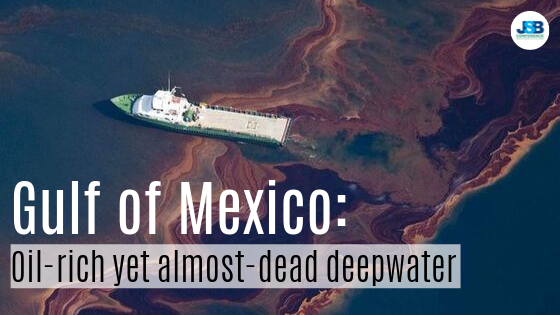
The Gulf of Mexico has remained largely lifeless in the deep-sea areas. Parasite-laden crabs and shrimps are only an exception to the case. Dating back to the decade-old explosion on the horizons drilling of deepwater, it spilled a big amount of oil into the Gulf.
Hard underlying substances in the water such as debris of the rig were expected to have something developing on the surface. However, the Deepwater areas in the Gulf of Mexico neither had anemones nor sponger and corals which is particularly found in such regions.
The marine water history saw its largest accidental release of oil in the year 2010 on April 20th. The BP explosion was one of its kind among the recent explosions on the earth releasing oil. Though there has been enough research, there isn’t an accurate estimation of the size of the spill. According to recent energy & utilities market research, it is approximately 650 million liters over 87 days.
There was research conducted to understand the rig underneath deepwater areas of the Gulf of Mexico. In this, camera-mounted vehicles were used which could be operated with the help of remotes. The findings in this study of rig beneath are published in August 2017.
Parasite covered crabs:
The research conducted endeavored to study the biodiversity but couldn’t find anything which is typical of the deepwater areas. Having said that, the team could find a lot of aquatic group of crustacea such as red deepwater crabs and shrimp. Speaking of their shape, they were rough with blackened shells. The crabs were covered in parasites.
One of the strange things about these finding was missing legs and claws of crabs. Due to the unusual nature of the deepwater, there were many shell deformities in what the team viewed.
Despite several efforts, the team could not collect any samples, and hence they can only form theories on what may have happened to the critters. McClain, who was the research leader said that the oil spilled in such areas typically mimick a sex hormone which is luring unwaring crabs to the area.
Here, they met with the toxic remnants of the oil spill instead of searching for a mate. As a result, their shells get covered while preventing them from shedding to remove the parasite which is cumulated in a natural manner.
While sharing the experience, Craig McClain said, “The prior week, we had done dives across the Gulf of Mexico and saw, you know, glass sponges and squids and fish and whip corals and giant isopods, one of my favorite deep-sea animals,”.
Explaining it further, he spoke of how the view was similar to be surrounded in the tropical rainforest while on other days it would appear like a parking lot of cement.
Though the subject is a key one in the history of deepwater, the team is afraid of getting a lack of attention. There’s more research expected to observe and study the Deepwater livings. Brazil deepwater conference happening in 2020 is one such upcoming international conference which encourages research and discussion in the field of Deepwater.
Some of the research teams who had been working on such projects were found working on their own money and efforts. There’s little support for the studies in such areas and discussing it through events is expected to push such projects further with proper financial support.
Though there’s little which can be done to restore the deepwater conditions, however, the research teams are hopeful if such topics get enough support, there’s maybe a lot to be done.